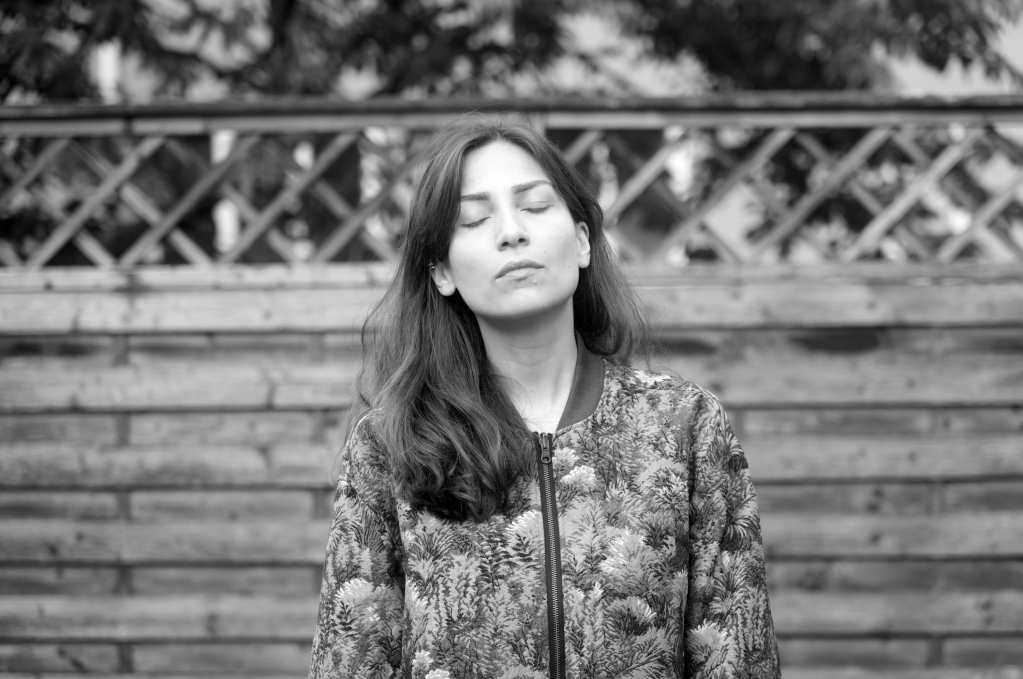
Mariam Gviniashvili is an Oslo-based composer and sound artist originally from the country of Georgia. Her compositional focus is on multichannel electronics and investigating the role of spatiality in composition. Her artistic practice extends to audiovisual and interactive sound-art works, live improvisation as well as collaboration with performers.
Mariam has worked in residence in the studios of EMS (Sweden), EMPAC (US) and The Cube, Virginia Tech (US). Her music has been presented internationally at concerts and festivals, including New-York Electroacoustic Music Festival, CIME/ICEM, Transitions concert series at CCRMA, ICMC 2018, Cube Fest 2019, Mixtur Festival, Klingt Gut, and Ultima Oslo Contemporary Music Festival, among others.
http://www.mariamgviniashvili.com
Mariam_Gviniashvili – Four_Questions
JrF: when & why did you become interested in field recording?
MG: Around ten years ago, while I was a composition student at the Tbilisi State Conservatoire, my then-teacher and now dear friend, composer Reso Kiknadze played Trevor Wishart’s Imago during one of the classes. That, I think, is the moment when I first became interested in sound, as I heard something totally different from anything I’d ever heard before. I remember being a bit confused, and at the same time, utterly impressed with the idea of composing a 26-minute long piece with less than a second of an audio sample- clink that I never would have thought of as a musical element back then. On the other hand, the sound world of the piece was so magical to my ears, I remember having it stuck in my head for a while. I understood that there was a whole new world for me to explore, where I could also find my place as an artist.
JrF: how do you use your field recordings in your own artistic output?
MG: My compositional work is based on recorded sound.
The way I use recordings is always dependent on the recordings themselves. There are ones with such strong embedded musical characteristics that they dictate the ideas and ways they will be used in the piece. These are usually the ones recorded spontaneously, using smartphones or handheld recorders. Other types of sound recordings are the ones that I make with a predefined concept for specific parts or an entire piece, with professional equipment, either in the studio or outdoors.
In regards to field recordings, I am usually careful with how I manipulate them. I limit the processing of these recordings to EQ’ing, cutting or layering, as I think they are complex and meaningful enough to be kept as close to the original, as possible.
My latest composing experience with field recordings was at the RIVERSSSOUNDS online residency, during which I worked on a soundwalk and a soundscape based on recordings made near the river Akerselva in Oslo. You can listen to the soundwalk here.
JrF: do you regard ‘natural’ sounds as a musical element (bearing in mind that the conventional definition of ‘music’ is rapidly becoming obsolete) or as sound? Is this definition important to you? does it matter? (nb. the term ‘natural’ is used in this instance to describe any sound from any object, animal or human that is observed or documented rather than generated with apparent compositional intent)
MG: Coming from Georgia, a country with a rich polyphonic singing tradition, singing has always been an essential part of my life. Based on that, and several years spent as a classical pianist, I had a definite idea about music. After diving into electroacoustic music, I saw that music could be anywhere, even in places I would not have previously considered musical, such as construction sites, train stations, or busy intersections with lots of car traffic. As banal as it may sound, music can be found in any sound, in any environment; it’s just the way we perceive it is very individual. What might sound very musical and pleasant for me could be an irritating noise for someone else.
JrF: how has the act of field recording altered the way you listen to your everyday surroundings, and how has it affected the way you listen to other music and sound (if at all)?
MG: My way of listening to the environment has been changing over time, as I have been spending more and more time making sound recordings. If years ago, I had to force myself into focused listening to identify sounds that I wouldn’t hear otherwise, nowadays, this happens naturally.
I have become aware of how increased urbanization and development affects our acoustic environment. This becomes more apparent when travelling, as I am used to Oslo’s low noise level. Spending time in Tbilisi, for example, makes me realize that although the city has a vivid, lively everyday life, it is almost impossible for me to ignore the noise and stay focused.
JrF: What are you working on currently, or looking forward to working on when it’s possible given any current restrictions?
MG: At the moment, I’m working on two compositions. One of them, titled Revelations, commissioned by Norwegian Centre for Technology and Arts (Notam), is an audiovisual piece that will premiere at Ultima Oslo Contemporary Music Festival in September 2021. The main theme of the piece is anxiety, with which we all struggle at some point in our lives. The visuals are based on the motion capture data of the dancer Synne Garvik, while the audio is multichannel electronics, based on human voice recordings.
Another piece for a singer and multichannel electronics is a commission of Ny Musikks Komponistgruppe. It is a prayer for the world in these challenging times, based on the voice recordings of chant songs from people worldwide. COVID-19 infection statistics is used to control dynamics and spatialization of the material over the loudspeakers. As the statistics keep changing, the composing process will continue until the virus has been eradicated globally. Until then, every performance will be unique. The premiere of the first iteration takes place in May this year, performed by composer and singer Kristin Bolstad.